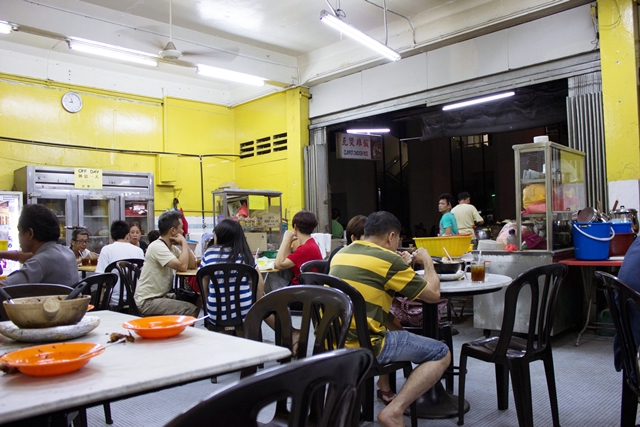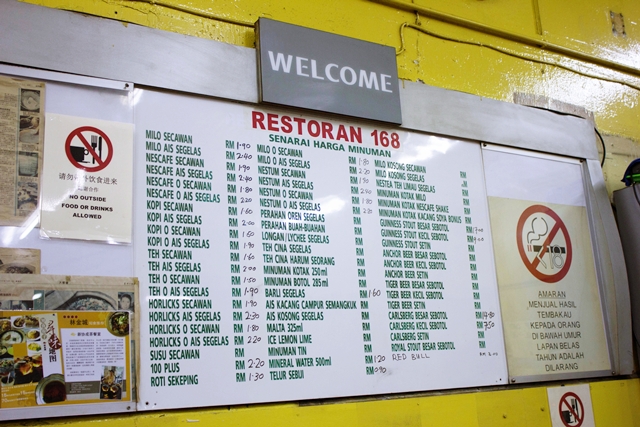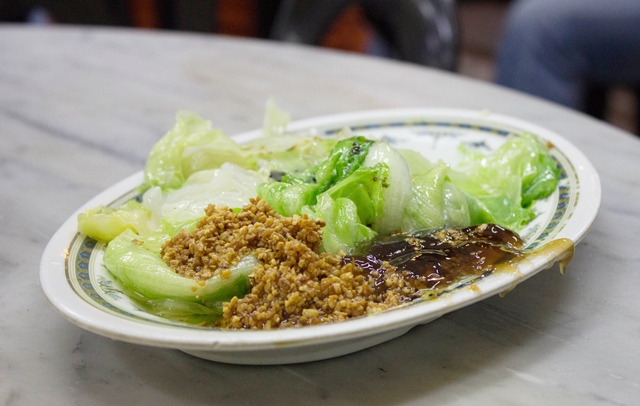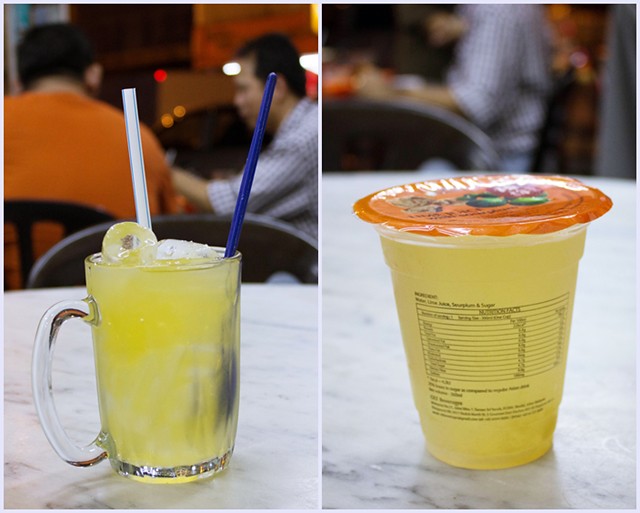On the night we reached KL, we were sent straight to Hotel Pudu Plaza. After checking in, we looked for a nearby restaurant that seemed decent for dinner immediately. A lot of hawker restaurants serving local Malay food were available, however the dishes were just not presented in a way that could easily capture my attention. Finally, we set foot in 瓦煲雞飯 (wa bao ji fan) and decided to try their signature Claypot Chicken Rice, which every table had.

Review of Claypot Chicken Rice 瓦煲雞飯 (Kuala Lumpur, Malaysia)
I glanced over at the menu posted on the wall and learned that it was only a listing of drinks.

Since they didn’t have a food menu, we had to specifically ask the staff to order. The boss and everyone else were speaking only in Mandarin and Malay. And apparently, they thought I was Japanese so they (including some other customers who heard me) were surprised when I spoke in Chinese. 😛
We had their signature Claypot Chicken Rice (瓦煲雞飯), Wintermelon Soup (冬瓜湯) and Chinese Stir-fried Lettuce (生菜). While waiting, I observed that it was interesting to see how the rice was being cooked using charcoal fire. Serving time was slow, since cooking rice in a claypot is really a slow process, but the result is worth the effort.

The claypot rice itself was done well. The bottom and sides developed an excellent crust that soaked up most flavor. However, I found that the claypot rice was dressed with too much black soy sauce and too much oil. Toppings consisted of savory chunks of skin-on, bone-in chicken, Chinese sausage (lap cheong) and mushroom. The chicken was a bit dry but plenty rich. Studded with fatty meat, the lap cheong was tender, sweet and smoky. The serving size was enough for two to share. The taste of 瓦煲雞飯 could get a little monotonous if you’d finish the entire portion alone.

Bright in color, the Chinese lettuce was good, crispy and fresh. It was a great side dish to the claypot chicken rice.

Any soup would be comforting for us that night, and we got the ever-nourishing and soothing Wintermelon Soup (also Cantonese in origin). It was cooked with pork bones and velvety cubes of wintermelon. The winter melon’s delicate white flesh had no distinct taste of its own, absorbing only the broth’s flavor.

Instead of going over the list of drinks all unfamiliar to us, we got the honeydew drink and sour plum juice. Their pictures were posted on the wall and somehow they looked good.
Light and refreshing, the honeydew juice turned out to taste like a hefty combination of green apple and melon juice. It was way better than the sour plum juice (suan mei, on the right), which was far from heavenly. Ugh, it tasted like salt and plum water (mouth-puckeringly sour) put together. I swear I won’t be salivating over this in a lifetime. It was so bad, but because Louie (the 壞人 that he is) chose the honeydew and inisted that I finish the sour plum one, I had no choice but to drink it. 🙁

This wasn’t the best meal we had in Kuala Lumpur, Malaysia. In fact, it was the worst. 😛 But for one who loves authentic Malaysian-Cantonese food, it’s a damn solid one. The salty and crusty claypot rice would do justice for your hunger. Considering that we paid RM 20 for everything in this meal, it’s was a reasonably good deal.

Leave a Reply to Gabby O’Brien Cancel reply